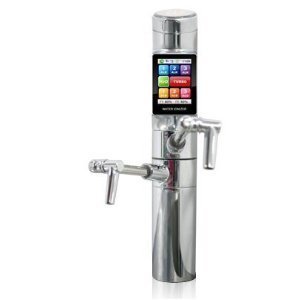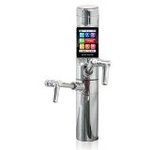What are we doing about LEAD in our homes? These are the solutions that I am incorporating into my home and into the homes of my clients:
SAFE Drinking Water: The testing of Drinking water is now a standard benefit of every kitchen and bath design that I work on.
 HEALTHY Drinking Water: I have researched and obtained (for my clients) RETTIN Tyent Ionized Water Filters which remove 100% of all LEAD and mercury in the water as well as pesticides, VOC's semi-VOC's, herbicide, disinfectants and non-metallic contaminants, and pharmaceutical contaminants. This Ionizer has the ability to create Alkaline water (up to 10.0 ph) which has extreme health benefits. It can also create Acid water used for disinfecting and cleaning. All of this is done through electricity, there are no additives involved. We are installing these at kitchen sinks and bar sinks; anywhere you would go for drinking water.
HEALTHY Drinking Water: I have researched and obtained (for my clients) RETTIN Tyent Ionized Water Filters which remove 100% of all LEAD and mercury in the water as well as pesticides, VOC's semi-VOC's, herbicide, disinfectants and non-metallic contaminants, and pharmaceutical contaminants. This Ionizer has the ability to create Alkaline water (up to 10.0 ph) which has extreme health benefits. It can also create Acid water used for disinfecting and cleaning. All of this is done through electricity, there are no additives involved. We are installing these at kitchen sinks and bar sinks; anywhere you would go for drinking water.
LEAD Pipes and Solder: As we design/remodel, we put into action replacing all lead pipes and all copper pipes that used lead solder.
LEAD in our paint: IT IS THE LAW (Toxic Substances Control Act section 402(c)(3)), that all firms working in pre-1978 homes and child-occupied facilities must be certified and use lead-safe work practices during renovations. I am personally trained and certified, and my company, Christine Suzuki Installations Inc is certified as well. (since 2010) The intent of this specific training is to contain any chips of paint and lead DUST. Dust is generally a healthy hazard even if it is not poisonous (as in lead.) So our SUPER SAFE DUST FREE PRACTICES are generally very good for your family's health safety and welfare.
Please contact me if you have any concerns about the LEAD in your home, we are committed to providing healthy non toxic interiors to all of our friends family and customers.
Namaste, Christine







